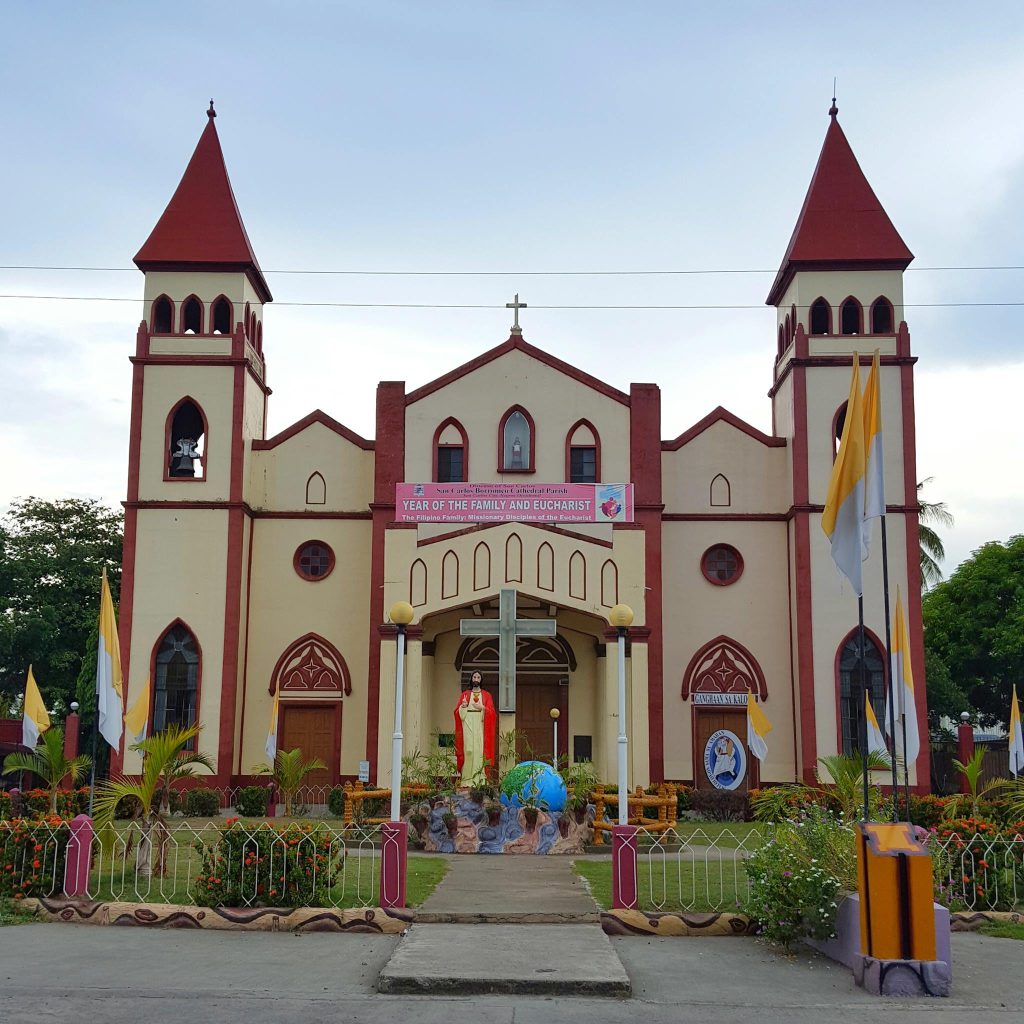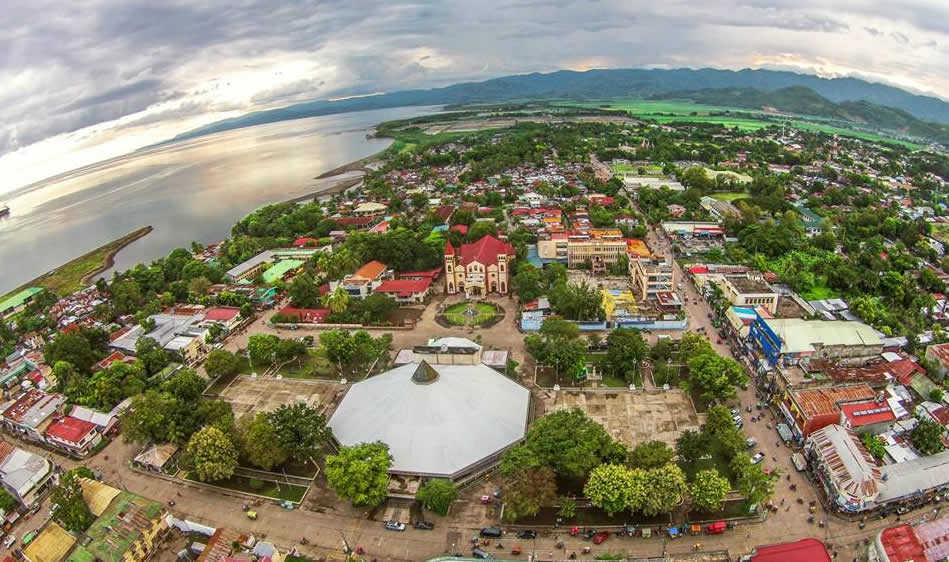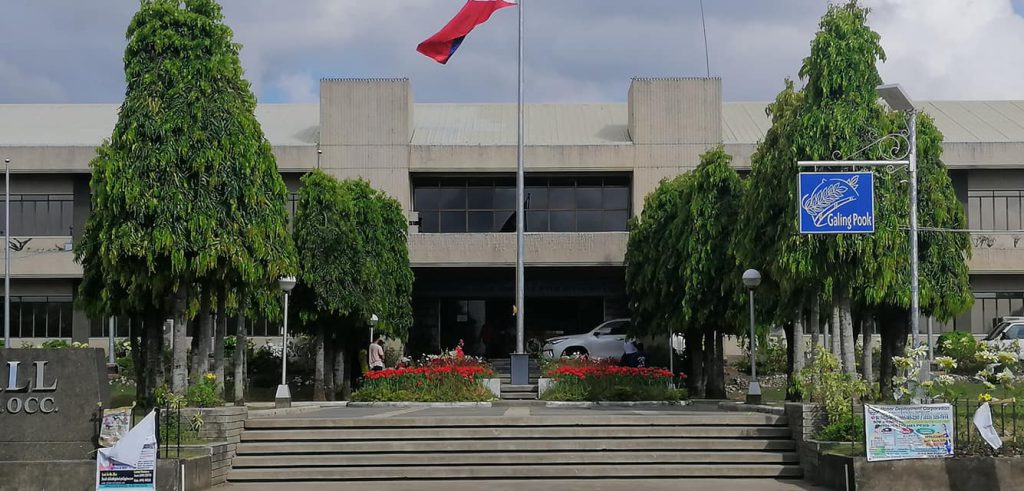Pre-Spanish and Spanish colonization
The present site of San Carlos City was a former barrio of Calatrava, called Nabingkalan, in honor of a beautiful daughter of a Negrito chieftain. It was said that a certain Carlos Apurado and his men from the town of Badian, Cebu, bought the settlement from the Negritoes.
In 1856, Buglas (Negros) Island, as a politico-military province under the Spanish Empire, was divided into two provinces, west Negros under Iloilo and east Negros under Cebu. Nabingkalan was under the jurisdiction of Calatrava municipality in Iloilo. Don Emilio Saravia, the first political-military governor in the island during the Spanish era, renamed the barrio and established it as a pueblo.
A mission belonging to the municipality of Calatrava was created in 1895, although since 1891 a religious had been assigned to it. The number of inhabitants at the time was 1,100, living in the mountainous areas rather than the coast where the modern village is located. Father Pedro Chivite was assigned to the mission. It was vacated during the Revolution, and in 1904 Father Eusebio Valderrama took charge of it. With the help of Fathers Ángel Quintana, Juan Lorenzo, and Vicente Vázquez, all the towns of the coast from Guihulngan to Escalante were attended to. Since then, it has been administered to by the Fathers. According to a church chronicle from 1925, what was a poor and depopulated village in 1897 was by then one of the most important towns in Negros Occidental. In that year, the city had an estimated population of 30,000. The land began to be cultivated when a Spaniard who observed the fertility of the land built a small sugarcane farm. Seeing the good results obtained, others joined in cultivating the land, modern machines were installed, and it became one of the most productive villages on the island. In 1889 there were four estates and in 1897 there were 16, mainly owned by Spaniards.
In 1856 Negros was raised to the category of a politico-military province, Saravia being its first governor. It was during his term that several towns of Negros Occidental, including San Isido, San Carlos, and Calatrava were established.
San Carlos prospered through the years, however the village lost its pueblo status in 1890, when Negros Island was divided into Negros Occidental and Negros Oriental, and the village was recorded as an arrabal or barrio of Calatrava (Hilub-ang).
American colonization
The San Carlos Borromeo Cathedral in San Carlos, built during the American period
During the first years of the American occupation of the Philippines, the economic and social pace of the activities of the people were gauged by the movements of the large landholders and Spaniards in the lowlands. In 1903, Filipinos were first allowed to elect their own leaders. In 1912, when a sugar central was constructed, the economic life of the people was greatly enhanced. Political activities, however, were closely connected to Calatrava until 1925, when it was organized into a municipality.
San Carlos Milling Company of San Carlos erected one of the first and only modern sugarcane mills in the Philippines, and has engaged in sugarcane cultivation and sugar production. The capacity of the mill is 1000 tons of cane per day, which results in 125 tons of centrifugal sugar. It was completed at the end of 1913 at a cost of about one million dollars, and the first cane ground was from the 1914 crop.
Per a 1903 act of the Philippine Commission, the municipality consisted of its present territory and that of Calatrava’s, with the seat of the municipal government at San Carlos.
In 1920, the municipality comprised the barrios Antabayan, Cubay, Euzcasa, Looc, Malalamban, San Juan, Santa Filomena, Sitio Banatic, Tigbon, and Varconia.
World War I encouraged the people of San Carlos to grow more sugar-producing crops. After the armistice in 1917, the planters who produced more sugar had their wealth greatly increased because of the new price of sugar never before enjoyed by the planters. During the war, many men of the municipality volunteered to fight for the United States, but a few months later were sent back home because of the armistice.



World War II
San Carlos was actively involved on the war efforts against Imperial Japan during World War II. A month after the surrender of Negros to the Japanese Imperial Forces, the guerrilla movement began in San Carlos and Calatrava. As early as June 15, 1942, guerilla units under the leadership of Captain Eugenio Antonio, Jr. and Lieutenants Leonardo Marane and Alfredo Valdivia, assisted by Philippine Commonwealth Army soldiers, began operations against the Japanese. Pitched battles were fought within populated areas. Despite the presence of the U.S. forces under Major Edward McClenahan, separate guerrilla units were scattered in the area under different commanders as they were unable to effectively establish a formal chain-of-command among the different factions.
Upon the return of some local USAFFE officers to San Carlos, the guerrilla movement was formally organized into fighting units under USAFFE Captains Catalino D. Rivera, Eugenio Antonio, Jr. and Loreto Y. Apuhin Sr., and with Lieutenants Florencio C. Yap and Andres L. Arrogante, the bands of guerrillas in San Carlos were consolidated under one command. Young men in their early teens joined the ranks and fought face-to-face against the Japanese.
In March 1945, the Philippine Commonwealth forces under the 7th, 71st and 72nd Infantry Division of the Philippine Commonwealth Army, 7th Infantry Regiment of the Philippine Constabulary and local guerrilla units under the command of Colonel Ernesto Mata, attacked the Japanese garrison in the compound of San Carlos Milling Company and succeeded in driving away the Japanese Army, at the cost of the life of Lt. Valdivia.
On October 10, 1945, President Sergio Osmeña appointed Eugenio Antonio as Acting Mayor of San Carlos and Anacleto Facturan as Acting Vice Mayor.
Former President Manuel A. Roxas appointed Constancio Rabacal as Mayor and Fausto Caballero as Vice Mayor of San Carlos on June 13, 1946.
Dionisio Gajo was appointed as a councilor of the city on September 9, 1946.
Juan Broce was appointed Vice Mayor of the city on June 7, 1947.
Eufronio Dolino, Juan Broce, Victorino G. Apuhin, Carlos Jones, Alfredo Rivera, Feliciano Gauzon Fermin de la Victoria and Hipolito Rigor were appointed Councilors of the city on June 10, 1946.
Post-war period
The first post-war election in the municipality resulted in a Liberal government. In the 1953 elections, the Nacionalista Party wrested power from the Liberals.
Cityhood
By Virtue of Republic Act No. 2643, the Municipality of San Carlos was converted into a city on July 1, 1960. The city inherited from the municipality numerous improvements, introduced by the last municipal administration under Mayor Sofronio Carmona.
The municipality’s status was elevated to city on July 1, 1960, per Republic Act No. 2643 and Presidential Proclamation No. 685 s. 1960.
